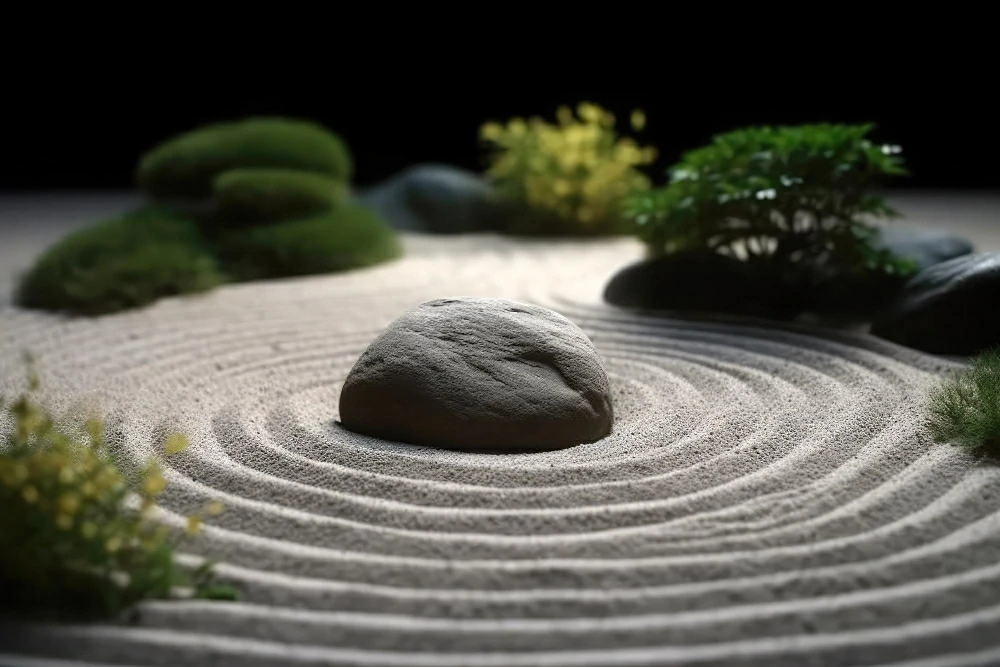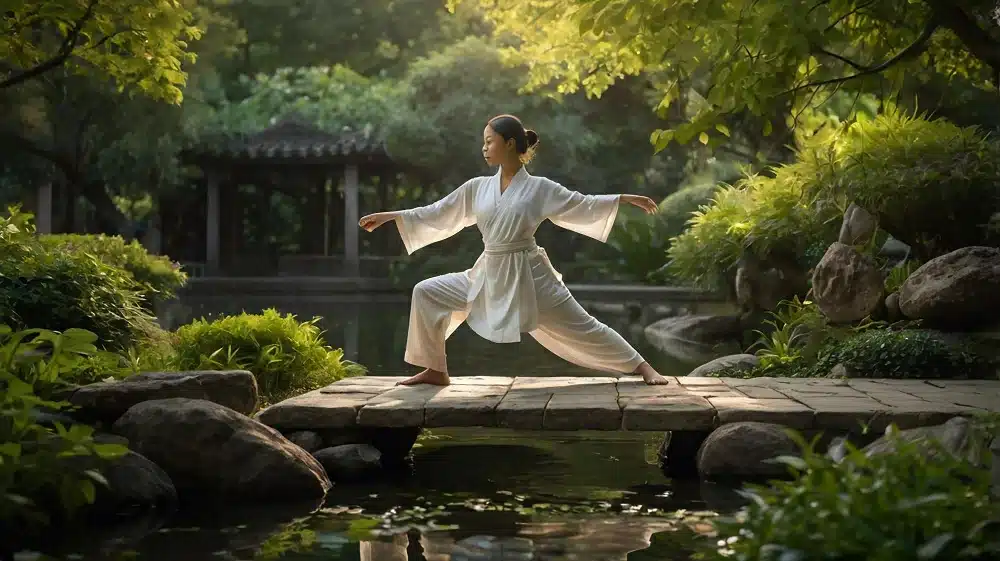What is Feng Shui?
- March 18, 2025
- Sunflower
The term “Feng Shui” has been passed down from the Jin Dynasty in China to the present day, with varying interpretations among different individuals. Westerners, unsure how to translate it, simply adopted the Chinese pinyin “fengshui,” which aligns with translation principles. Below is a collection of Feng Shui knowledge compiled by Serestone. Let’s take a look!
Definition of Feng Shui
The Dictionary of Chinese Mystical Culture explains Feng Shui as a highly complex concept that includes at least the following aspects:
The dwelling and living environment of ancestors. Influenced by the belief in the immortality of the soul, ancient people thought that after death, ancestors continued to exist in another world—the underworld. Therefore, traditional Feng Shui encompasses not only the living environment of the living but also burial sites and their surrounding environments.
The mystical connections between environmental elements—such as mountains, water, wind, air, soil, and sunlight—and traditional philosophical concepts like Qi, Yin-Yang, the Five Elements, and the Bagua.
The impact of these connections on the residents’ present life and future fortune. Driven by ancestral worship beliefs, people often viewed the underworld environment of their deceased ancestors and its influence on their descendants as even more important than their own living conditions. This led to a greater emphasis on selecting and managing burial sites (Yin dwellings) compared to homes for the living (Yang dwellings).
Due to this distinction between the living and the dead, Feng Shui is divided into two main categories: Yin Feng Shui (for burial sites) and Yang Feng Shui (for homes and living spaces). In many contexts, “Feng Shui” specifically refers to Yin Feng Shui. As the classic text states: “A dwelling is chosen; one must select an auspicious location and build accordingly.” Regardless of the type of environment, the ultimate goal of ancient Feng Shui practices was to gather and preserve beneficial Qi.

The True Meaning of “Feng” and “Shui”
The “Feng” in Feng Shui does not refer to wind as commonly understood—the natural movement of air. Instead, it represents the force of motion. Similarly, “Shui” is not merely water (H₂O) as we use in daily life; it carries a broader, deeper meaning, primarily symbolizing stillness.
In Geomancy (Feng Shui study), the undulating ridges of mountains (earth’s surface folds) are metaphorically referred to as “dragons”—a highly vivid analogy. As a dragon moves, it stirs the air, generating “wind” (dynamic force). When a dragon comes to rest, it gathers “water” (a sign of stillness). Therefore, the original meaning of “Feng Shui” refers to the movement and stillness of dragons.
A dragon must have both movement and rest in balance to generate vitality and form auspicious Feng Shui locations (known as “acupoints” or “energy fields”). If a dragon moves endlessly (overextended energy) or remains completely still (dead energy), there will be no vitality, and thus, no auspicious site can be found. Places where the movement and stillness of the dragon are in harmony are said to have “good Feng Shui”, while areas where this balance is disrupted are considered inauspicious.
The Practice of Feng Shui: Observation & Application
“Observing Feng Shui,” also called Kan Yu (Geomancy), involves studying celestial and terrestrial patterns to understand the movement and resting points of dragons, ultimately locating the best sites for homes (Yang dwellings) and burial grounds (Yin dwellings). This practice also includes assessing whether an already-built site aligns with Feng Shui principles.
“Applying Feng Shui” refers to using Feng Shui techniques in construction and design to gather and contain beneficial Qi, ensuring it does not dissipate and flows in a controlled manner. The results of proper Feng Shui application are reflected in well-designed Yin and Yang dwellings that harmonize with the natural energy flow, fostering prosperity and well-being.
In modern terms, Feng Shui is a comprehensive evaluation of the quality of living, working, and burial environments based on the principles of the I Ching (Yi Jing). Feng Shui practice (Geomancy) is a discipline that uses the I Ching as its foundation, following the concept of “harmony between heaven and humanity” to guide people in selecting and designing the most suitable locations for living, working, and, in ancient times, burial sites.
Geomancy (Kan Yu) refers to the theories and methods used to assess the quality of Feng Shui, while Feng Shui itself is the overall evaluation of an environment’s quality. When we say a place has “good Feng Shui” or “bad Feng Shui,” we are making an assessment based on Geomantic principles. However, we cannot say a place has “good Geomancy” or “bad Geomancy,” as Geomancy is the method of evaluation, not the outcome. Therefore, Feng Shui and Geomancy should not be confused as the same concept.

Feng Shui and Science
In the study of environmental science, scholars believe that ultrafine ions and magnetic fields in nature have a significant impact on the human body. They also assert that every substance in nature emits energy, which changes with environmental fluctuations and shifts in the body’s own energy field. This informational energy can bring joy, mental clarity, and longevity, but it can also lead to sluggish thinking, nervous disorders, frequent illnesses, and a shortened lifespan.
Throughout a person’s life, the human body continuously exchanges matter, energy, and information with the external environment, inevitably involving certain physical and chemical phenomena (some scholars have successfully conducted tests on humans, animals, and plants using scientific instruments). Under external influences, the human body undergoes a series of physiological and biochemical reactions, which provide a scientific basis for the mechanisms of Feng Shui. The following aspects help us gain a deeper understanding of Feng Shui.

Ecological Architecture and Feng Shui
Why do people in northern China live in brick houses, while those on the northwestern plateau dig underground dwellings, and people in Yunnan build stilted bamboo houses? This is the most fundamental reflection of ecological architecture in human cognition. The core principle of Feng Shui is "Li Qi"—the search for vital energy. Places with strong vitality should be sheltered from the wind, face the sun, and be surrounded by clear mountains, flowing water, birdsong, and floral fragrances. This concept aligns perfectly with ecological architecture!
Ecological architecture is the study of the symbiotic relationship between human-built environments and natural ecosystems, while Feng Shui incorporates additional psychological and emotional factors. It is no surprise that when Western scholars, who pioneered the study of ecological architecture, turned their attention to Eastern culture, they were astonished to find that traditional Chinese Feng Shui theories, developed over thousands of years, resonate with the emerging ideas of modern ecological architecture.

Human Information and Feng Shui
Exploring the interaction between information fields and the harmonious resonance of human energy is the true scientific meaning of Feng Shui. In essence, medicine is also a method of regulating the resonance between human and natural information. While medicine focuses on adjusting the body's life information, Feng Shui works by adjusting environmental information.
From a metaphysical perspective, each individual has a unique “destiny pattern” (Ming Ge), and human energy fields reflect these unique life patterns, energy structures, and their combinations. When a person’s energy synchronizes with natural energy, achieving a state of resonance, they are in an optimal state—what Feng Shui describes as shang feng shang shui (favorable wind and water conditions).For example, sleeping in the correct direction aligns the body’s energy with magnetic field information in the most fundamental way. The presence of beautiful flowers and plants enhances mood, representing a common method by which natural information regulates human energy. Similarly, when a country’s policies align with the people’s beliefs (both of which are forms of energetic information), a resonance occurs between social and collective consciousness, leading to harmony and prosperity.

Environmental Landscape Studies and Modern Feng Shui
When we visit historical sites like the Forbidden City in Beijing or the classical gardens of Suzhou and Hangzhou, we are captivated by their intricate carvings, golden hues, and breathtaking beauty. In contrast, when we encounter barren wastelands swept by fierce winds and sandstorms, we instinctively avoid them.
Lush mountains and clear waters, places sheltered from the wind and bathed in sunlight, naturally bring a sense of peace and joy. The gentle sound of flowing water and the vibrant greenery create an atmosphere that makes people linger. The sight of birds dancing and flowers blooming lifts the spirit and soothes the soul. These experiences illustrate the physical, physiological, and psychological effects of environmental landscapes on human well-being.
Such harmonious surroundings enhance mental clarity, boost creativity, and sharpen intuition. The mission of modern Feng Shui is to integrate the practical wisdom of traditional Feng Shui with contemporary environmental landscape studies, ensuring a better and more harmonious living environment for all.

Hydrogeology and Feng Shui
Why do Hainan and Xinjiang have longevity villages, while Shaanxi and Guizhou have so-called “foolish villages”? Why do places with natural mineral springs tend to produce talented individuals, while women living near tin mines often face fertility issues? The answer lies in geology—iron, zinc, and organic proteins are beneficial to the human body, whereas elements like radium and other radioactive substances can harm health and cognitive development.
Why do traditional Feng Shui masters taste the soil and water as part of their practice? Because people naturally prefer locations with sweet, clean water, while places with bitter, unpleasant water are often uninhabited. The health and longevity of a population are deeply connected to hydrogeological factors.
The concept of “dragon veins” (long mai) in Feng Shui originated from historical environmental observations. In essence, lying on the ground to listen for underground water is a primitive yet effective method of studying mountain formations and geological structures. Interestingly, the Feng Shui principle of protecting dragon veins aligns with modern concepts of soil conservation and environmental protection in contemporary geology.
Conclusion
The mission of modern Feng Shui is to scientifically reinterpret thousands of years of traditional wisdom, stripping away superstition while preserving its rational and scientific aspects. Every culture exists for a reason, and Feng Shui, which has endured for millennia, is no exception.
The goal of hydrogeological Feng Shui is to study the mountains, rivers, geological formations, mountain ranges, soil conditions, and chemical elements that influence human life. By understanding these natural factors, humanity can better comprehend, adapt to, and live in harmony with nature.









